 Radiant Barrier technology was developed by NASA over 40 years ago to protect astronauts in the Apollo program from temperatures that ranged from 250 degrees above zero to 460 degrees below zero Fahrenheit.
Radiant Barrier technology was developed by NASA over 40 years ago to protect astronauts in the Apollo program from temperatures that ranged from 250 degrees above zero to 460 degrees below zero Fahrenheit.
This reflective insulation has been applied to protective wear for fire fighters to thermal blankets for rescue workers and even survival sleeping bags.
Studies have shown that up to 93% of ceiling heat gained in summer months occurs from radiant heat transfers from at

Roof shingles and decking absorb radiant heat generated by the sun and transfer this heat into attic spaces heating up existing insulation. Once this existing insulation meets
its saturation point, it then radiates this heat to all surfaces within the interior of the home (ceilings and walls).
Radiant Barrier and reflective insulation products BLOCK almost ALL of this radiant heat.
Q. How does Radiant Barrier work?
A. Radiant Barrier is unlike mass insulation which only slows down or resists heat transfer. Radiant Barrier reflects heat. Heat naturally goes cool; the problem is how to keep the heat in the winter and how to keep the heat out of the attic and home in the summer. There are three ways in which heat goes from warm spaces to cold spaces: CONDUCTION is direct heat flow through a solid object such as a wall or a ceiling. CONVECTION is heat movement through air, occurring when air is warmed. The warm expands, becoming less dense and rising. RADIATION is the movement of heat rays across air spaces from one warm object to a cooler object. The heat we feel from a wood stove or a quartz space heater is radiant heat. ALL OBJECTS AND BODIES GIVE OFF RADIANT HEAT. Even the insulation in your attic gives off radiant heat to the cold attic space in the winter, and to the living space in the summer.
Regular insulation won’t stop radiant heat loss. Radiant heat must be REFLECTED with a radiant barrier.
Q. I already have plenty of insulation in my attic. Do I really need Radiant Barrier?
A. Regardless of how much insulation you have in your attic, adding Radiant Barrier will save on your heating and cooling expense, and keep you much more comfortable. Energy savings for heating and cooling can vary from 17% to 25% depending on a number of factors, including climate, building configuration, materials used, site, family size and lifestyle. Your Radiant Barrier™ Expert has been trained to evaluate your home or business and advise you of your savings potential.
Q. Where do you install Radiant Barrier?
A. Radiant Barrier can be laid over your present insulation like a blanket or stapled under your rafters or crawl space.
Q. Will my roof get hotter when I have Radiant Barrier in my attic?
A. No. Radiant Barrier has been used extensively in the south, showing no difference in roof temperatures, as confirmed by field tests.
Q. What is the R-Value of Radiant Barrier?
A. The R-value depends on the number and size of the airspaces surrounding the Radiant Barrier™ and on the direction of the heat flow. Since Radiant Barrier is usually installed on top of existing mass insulation, its R-value is not affected. It is Radiant Barrier’s ability to reflect heat that makes it an excellent energy saver.








